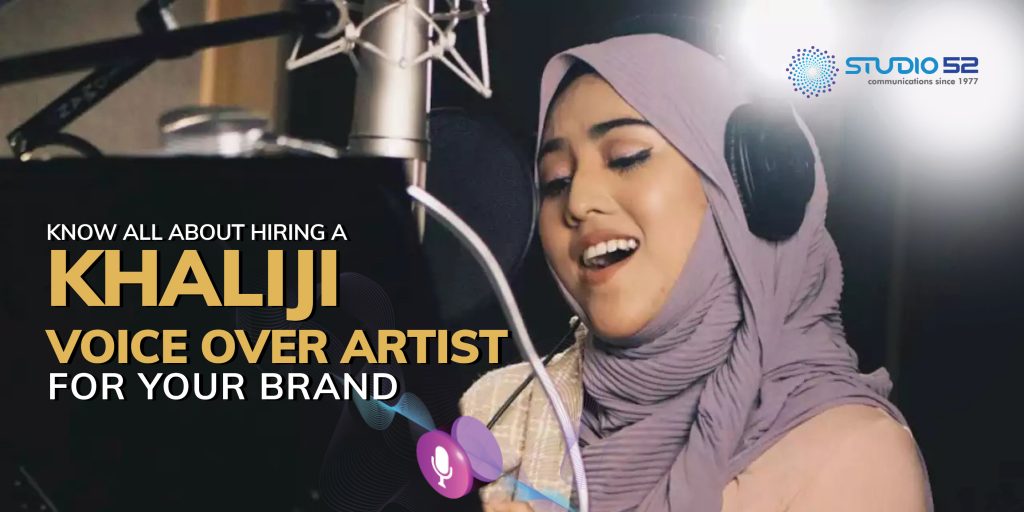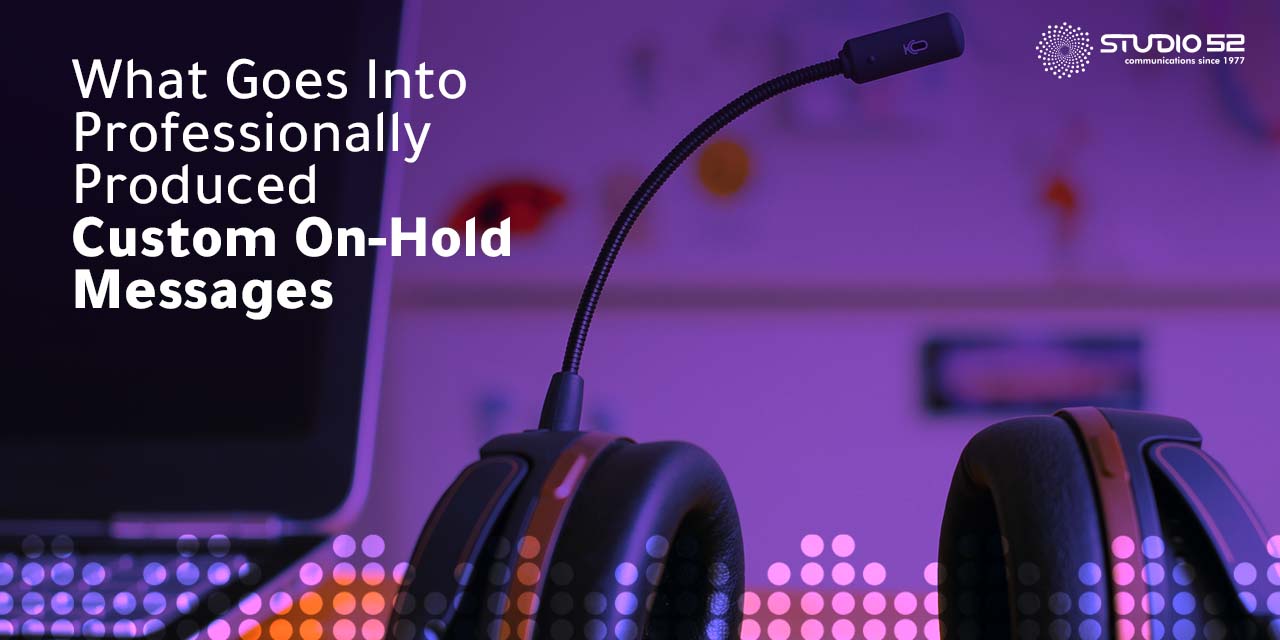Countries like Saudi Arabia, the UAE, Bahrain, Kuwait, and Qatar are members of the Gulf Cooperation Council. These countries are strategic locations for business, investment, finance, and tourism. Many of the top international companies across various industries often choose the Gulf as their Middle East headquarter. It also attracts millions of foreign expats and tourists all year round.
The official language in all these countries is Arabic, a Semitic language that is very closely related to Hebrew, but there are many variations prevalent in the region. Out of the top 10 Arabic dialects, Gulf Arabic or Khaliji is one of the most common in Eastern Arabia or countries that are a part of the GCC.
Although Modern Standard Arabic is the official language in business and trade, if you want to engage with the audience and earn their trust, you need to craft your voice-over messages in the dialect that they understand. Say, for example, if you have to show a safety training video to your staff in the GCC region, they are better likely to absorb the information if the voice-over is in Khaliji, a dialect that they are comfortable with rather than Hejazi, another dialect in the Gulf.
Therefore to conduct your business successfully in the Gulf, you need to make sure that you are using the right dialect to target your audience. Let’s take a deep dive into the Arabic language to see why it’s important to have the right Khaliji voice-over artist for your brand.
More About Arabic Languages
There are more than four hundred million Arabic speakers in the world. These Arab-speaking people live across 26 countries and because it has traveled so far, the dialects within it have developed. This means even within the country the Arabic dialect varies greatly. This presents a great challenge for voiceover translation. Choosing the wrong dialect to translate into can be disastrous for your brand image.
Arabic being the third most important language for global business, it’s important for anyone looking for a voiceover to be familiar with the challenges that it presents.
Choose Studio 52 for Khaliji voice-overs and resonate with audiences across 26 Arabic-speaking countries. Connect with 400 Million Arabic Speakers!
Understanding the Different Dialects is the Key
If you are going to give a voice-over in the Arabic language you need to understand the languages spoken in the country.
The Arabic language has evolved from the Nabataean Aramaic script, which dates back to the 4th century. And the earliest written recording of it is in the Qur’an that belongs to the 7th century. This is known as Classical Arabic and became a common language for many speakers, but this began to change during the 8th century.
From Easter Iran to Northwestern Africa you will find people who speak Arabic. But, it’s interesting to note that different regions have different dialects. Some dialects share common features, while others are like another language, which means there is a noticeable difference in the spoken Arabic language.
That’s why choosing the right one can be such a challenge. Some of your target audience won’t be able to understand the dialect you choose. And this would reduce the reach of your message to a great deal, which you want to avoid at any cost.
Also Read: 9 On hold message ideas
So what’s spoken and where?
Looking at different places and what’s spoken where in the Gulf would help you choose a dialect. So let’s take a look at some of these common dialects.
Egypt has the most native Arabic speakers that amount to 94 million. This dialect is known as Egyptian Arabic. Other regions also speak Egyptian Arabic because of the widespread media influence that uses this dialect.
Maghrebi Arabic is popular in Northwestern African countries such as Morocco, Tunisia, Algeria, and Libya. There are around 70 million people who speak this dialect.
In eastern Syria and Iraq however, people speak in Iraqi Arabic. It is also called Mesopotamian Arabic and around 32 million Arabs speak it.
Countries that belong to the Levant region, like most of Syria, Lebanon, Palestine, and Jordan speak Levantine Arabic. It is also spoken in parts of Cyprus and Turkey. This dialect is spoken by 20-21 million in the area.
There are very few speakers of Sudanese Arabic, only around 17 million. People living in northern Sudan and a few parts of southern Egypt speak it.
And finally, there’s Khaliji or Gulf Arabic, which people speak around the Persian Gulf, The UAE, Qatar, Bahrain, Kuwait, and parts of Saudi Arabia. Khaliji is also spoken in Iraq, Iran, and Oman. It’s interesting to note that there is a long list of countries that speak in this dialect. This and the fact that these countries are economically prominent is what makes it so important and the most requested language for voice-overs.
That’s not all, there are many other dialects, such as Najdi Arabic and Hejazi Arabic. There are dialects even within these standardized dialects.
So how do you know which dialect to use?
The dialect you choose to convey your message in should largely depend on the area your target audience is based in. So, for example, if your target audience is based in Qatar, you need to choose Khaliji for your voice-over needs.
There is a lot of difference in the pronunciation of words like “K” is pronounced as “CH” and “Q” would sound like “G” and the letter “J” as the letter “Y”. So, a voice-over artist who is familiar with all these differences would give you the best results.
Know Your Audience
Arabic dialects are not written, they are only spoken and voice-over is also spoken. So be very careful using dialects with formal content and settings. Knowing where your video will be shared and with whom might help overcome some of the challenges.
In Arab countries, not many people speak or understand English. So you must use voiceover whenever possible. And while doing so, you need to ensure that the voiceover is understood in that region. Just going by Arabic is not enough, dialect is important to connect with your audience. For example, in Bahrain and the surrounding area, Khaliji would be a good choice.
Just like actors and performers, voice-over artists bring a script or a story to life. In other words, a professional voice talent puts the icing on the cake. And, we have some of the most amazing Khaliji voiceover artists with us who can easily capture the hearts and the minds of the people in the UAE.
So, what sets us apart in Khaliji voice-over services?
- We are working with some of the most talented native Khaliji voice-over artists.
- We are aware of the local culture and customs.
- We have the access to the latest and state-of-the-art recording equipment for top-notch audio quality.
- We have already recorded some amazing voiceovers for both big and small brands.
- We are familiar with other Arabic dialects too, so you can have all your localization needs done in one place.
Hiring a professional Khaliji voice artist saves you time and money and also gives more authenticity to your message.
Discover the perfect Arabic voice for your project with Studio52 along with an assurance of superior customer experience. Head over to our gallery to listen to a few examples. The experienced and native Arabic or Khaliji voice-over artists at Studio52 will offer you believable, captivating, and unique voices for your project and campaigns. If you don’t know where to get started, our sales team at Studio52 would be happy to help you find the right voice for your project. Just shoot us a mail or call and we will take care of the rest.
With Studio 52’s mastery of Levantine Arabic for genuine connections in Syria, Lebanon, Palestine, and Jordan. Speak Directly to 20M Levantine Speakers!






